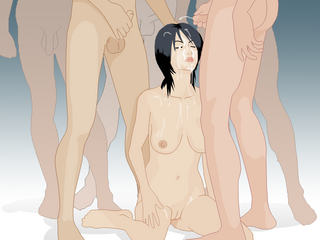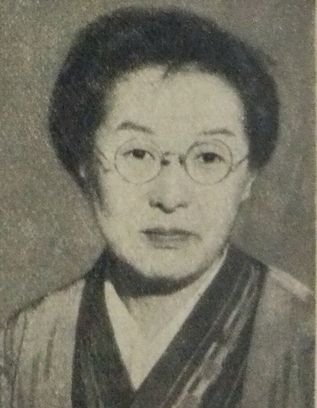
Comics are a medium used to express ideas with images, often combined with text or other visual information. It typically takes the form of a sequence of panels of images. Textual devices such as speech balloons, captions, and onomatopoeia can indicate dialogue, narration, sound effects, or other information. There is no consensus among theorists and historians on a definition of comics; some emphasize the combination of images and text, some sequentiality or other image relations, and others historical aspects such as mass reproduction or the use of recurring characters. Cartooning and other forms of illustration are the most common means of image-making in comics. Photo comics is a form that uses photographic images. Common forms include comic strips, editorial and gag cartoons, and comic books. Since the late 20th century, bound volumes such as graphic novels, comic albums, and tankōbon have become increasingly common, along with webcomics as well as scientific/medical comics.

Postmodern art is a body of art movements that sought to contradict some aspects of modernism or some aspects that emerged or developed in its aftermath. In general, movements such as intermedia, installation art, conceptual art and multimedia, particularly involving video are described as postmodern.

Gloria Jean Watkins, better known by her pen name bell hooks, was an American author, theorist, educator, and social critic who was a Distinguished Professor in Residence at Berea College. She was best known for her writings on race, feminism, and class. She used the lower-case spelling of her name to decenter herself and draw attention to her work instead. The focus of hooks' writing was to explore the intersectionality of race, capitalism, and gender, and what she described as their ability to produce and perpetuate systems of oppression and class domination. She published around 40 books, including works that ranged from essays, poetry, and children's books. She published numerous scholarly articles, appeared in documentary films, and participated in public lectures. Her work addressed love, race, social class, gender, art, history, sexuality, mass media, and feminism.

Bukkake is a sex act in which one participant is ejaculated on by multiple participants. It is often portrayed in pornographic films.

Mary Beatrice Midgley was a British philosopher. A senior lecturer in philosophy at Newcastle University, she was known for her work on science, ethics and animal rights. She wrote her first book, Beast and Man (1978), when she was in her late fifties, and went on to write over 15 more, including Animals and Why They Matter (1983), Wickedness (1984), The Ethical Primate (1994), Evolution as a Religion (1985), and Science as Salvation (1992). She was awarded honorary doctorates by Durham and Newcastle universities. Her autobiography, The Owl of Minerva, was published in 2005.

The Goddess movement is a revivalistic Neopagan religious movement which includes spiritual beliefs and practices that emerged primarily in the United States in the late 1960s and predominantly in the Western world during the 1970s. The movement grew as a reaction both against Abrahamic religions, which exclusively have gods who are referred to using masculine grammatical articles and pronouns, and secularism. It revolves around Goddess worship and the veneration for the divine feminine, and may include a focus on women or on one or more understandings of gender or femininity.
Sir Arthur Henry Hugh Cortazzi, was a British diplomat. He was also a distinguished international businessman, academic, author and prominent Japanologist. He was Ambassador from the United Kingdom to Japan (1980–84), President of the Asiatic Society of Japan (1982–1983) and Chairman of the Japan Society of London (1985–95).
Feminist separatism is the theory that feminist opposition to patriarchy can be achieved through women's separation from men. Much of the theorizing is based in lesbian feminism.
Zoku (族) is a Sino-Japanese term meaning tribe, clan, or family. As a suffix it has been used extensively within Japan to define subcultural phenomena, though many zoku do not acquire the suffix.

Ken Domon was a celebrated Japanese photographer known for his work as a photojournalist and as a photographer of Buddhist temples and statuary.
Yamada bugyō (山田奉行) were officials of the Tokugawa shogunate with responsibilities as an official representatives of the shogunate in Ise.

Ineko Sata, also Ineko Kubokawa, born Ine Sata, was a Japanese writer closely connected to the Proletarian Literature Movement. An advocate of women's rights, she has also repeatedly been linked to the feminist movement.

George Quaintance was an American artist, famous for his "idealized, strongly homoerotic" depictions of men in mid-20th-century physique magazines. Using historical settings to justify the nudity or distance the subjects from modern society, his art featured idealized muscular, semi-nude or nude male figures; Wild West settings were a common motif. His artwork helped establish the stereotype of the "macho stud" who was also homosexual, leading him to be called a "pioneer of a gay aesthetic". He was an influence on many later homoerotic artists, such as Tom of Finland.
The following is a timeline of the history of the city of Kyoto, Kyoto Prefecture, Honshu island, Japan.
An An is a weekly Japanese women's lifestyle magazine. It is one of the earliest and popular women's magazines in Japan. In 2009 it was described by Japan Today as a mega-popular women's magazine. It is also one of the best-selling women's magazines in the country.
Shufu no Tomo was a Japanese monthly women's magazine based in Tokyo, Japan. The magazine was in circulation between 1917 and 2008.
This is a list of works by or about Paul Levinson, American author.
Kanai Yoshiko is Japanese academic and feminist theorist. She explored the complexities of the feminist movements in Japan and the difficulty in launching women's studies in a society bound by dualistic definitions of gender. Coining the phrase "housewife feminism", she addressed how Japanese society had attempted to appease women without addressing the underlying systemic problems that continued to foster inequality.









